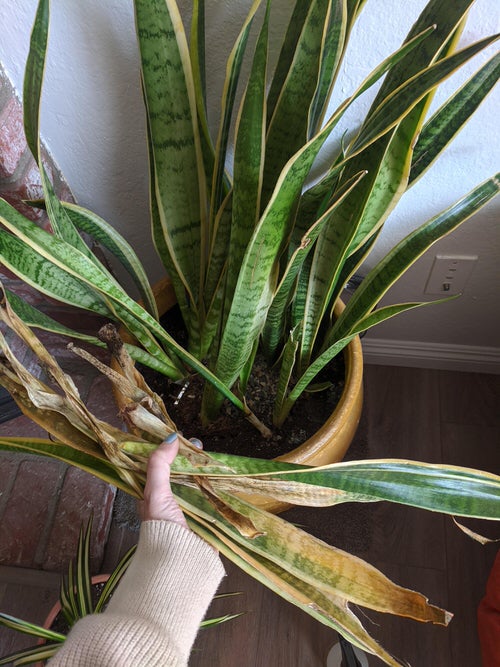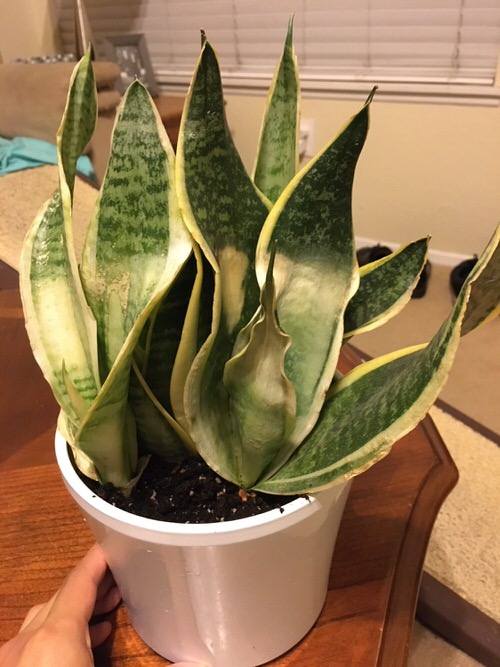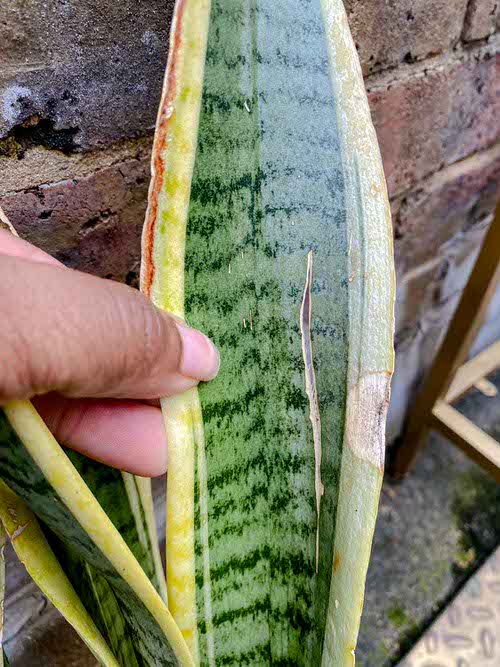Read about the 8 Common Snake Plant Problems and Solutions in this post, and have a lush, healthy growth of your favorite houseplant.

If you are worried due to the poor growth of your mother-in-law’s tongue, then this post will help you rejuvenate your favorite houseplant. Read about the Common Snake Plant Problems and Solutions with this article.
Common Snake Plant Problems and Solutions
1. Fungal Issues

While growing snake plants, this is one of the most common issues that you’ll have to battle as the plant is prone to rotting of roots and diseases. Two of the most common ways to find this issue is:
Foul Smell from the Growing Medium: If you notice an odor from the soil, this indicates that either the plant is suffering from root rot or has some fungal issues.
Brown or Yellow Foliage: Healthy leaves are brown with a bright variation. Anything opposite to it indicates that something is wrong with the plant, which can be due to pests, diseases, and root rot.
Solution:
The best way to solve this issue is to change the growing medium by planting it in a new container with fresh soil. Avoid overwatering and place the plant where it gets enough air circulation.
2. Stunted Growth
Snake plants usually get 3-5 feet tall in a year. If you notice that your plant is not growing at the rate it should, then it may be because of low humidity and lack of enough sunlight.
Solution:
Relocate the indoor plant outdoors to a spot where it gets bright light. Also, avoid growing it in an excessively small pot, as this will restrict the growth of roots, stunting the growth of the plant.
3. Watering Issues
Watering can make or break Snake plants. This plant is sensitive when it comes to the moisture levels in the soil and you have to be careful not to overwater it. As the plant shows the same signs when it is under or over watered, it becomes tough for people to strike the right balance.
Solution:
Check the soil moisture before watering the plant using a finger or if the soil develops some cracks. Avoid watering the plant daily.
4. Falling Leaves

Overwatering is the biggest cause of falling leaves in snake plants. The leaves turn mushy at the base, and wrinkles appear and fall off. Tall foliage growth can also cause them to fall. If plant is kept in the dark room, it can also cause leaves falling.
Solution:
For tall snake plants, cut the floppy foliage and plant them in separate pots. Keep the plant in an area with bright, indirect light. Avoid using too big it small containers. Use a pot that is 1-2 size larger than the rootball.
5. Leaves Splitting
Split leaves in snake plants are caused due to low humidity and physical damage. These conditions result in dehydrated leaves with splits and cracks.
Solution:
Keep your snake plant in an area with 40-50 percent humidity. You can also use humidifier or group plants together.
6. Leaves Curling and Folding

In stressed conditions, the foliage curls inward or outward. It happens due to under or overwatering, shrimp infestation, excessive sunlight, transplantation shock, and root rot.
Solution:
Avoid keeping snake plants in the harsh afternoon sunlight and overwatering them. To get rid of pest infestations, use a neem solution or spray the plant with 70 percent isopropyl alcohol by mixing one part of water with it.
7. Temperature Issues

Snake plant is quite forgiving when it comes to the lighting requirements, but it cannot withstand the sudden temperature changes.
Excessive heat or cold can cause browning, wilting, or wrinkling of the leaves.
Solution:
It does best in the temperature range of 55-85 F (12-30 C). While growing it indoors, keep the plant away from A/C and heating vents.
8. Thin & Outstretched leaves

In the absence of sufficient light, snake plants direct their energy and form longer foliage to approach the light. This condition results in thin leaves that are not wide and healthy.
Solution:
Unfortunately, this condition cannot be restored. Transfer the plant to a location with bright, indirect light. Snip off the stretched foliage to maintain the appearance of your plant.
Note: Remember that droopy leaves can be a sign of too much heat; however, snake plants can handle full sunlight. Too much exposure to direct, intense light can adversely affect the plant. To improve this condition, place the plant in an area with bright, indirect light.











